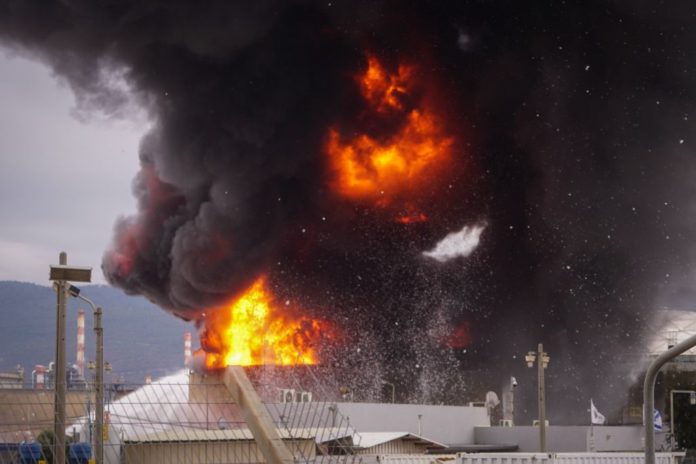

Officials in northern port city see blasts in Lebanese capital as ‘wake-up call,’ urge government to speed up efforts to move dangerous oil, petrochemical industries away from bay.
The mayor of Haifa voiced concern on Wednesday that the “horror scenario” gripping Beirut could unfold in the northern Israeli port city, a day after blasts in Lebanon’s capital claimed the lies of at least 100 people and wounded thousands.
Calls to speed efforts to move potentially dangerous oil and chemical factories out of the densely populated Haifa area before disaster strikes came thick and fast in the wake of the massive explosion at the port of Beirut, which was linked to stockpiles of some 3,000 tons of ammonium nitrate.
Close to residential areas housing 900,000 people, the Haifa Bay in northern Israel is home to the country’s biggest industrial area. It has two ports and more than 60 industrial plants including oil refineries and processing factories, power plants and storage facilities. It is crossed by major national road systems along which hundreds of thousands of people drive each day.
Haifa’s mayor, Einat Kalish Rotem, wrote on Facebook on Wednesday, “The fear of all of us, based on experts in the field, is exactly of a horror scenario like the one that erupted yesterday north of Israel….Yesterday we received a wake-up call from Beirut… There is no place for hazardous substances and polluting factories within the urban space and among the population. After being shocked by the harsh sights from Lebanon, it’s time to act.”

Innovation Conference in Tel Aviv, February 27, 2019. (Flash90)
Eli Dukorsky, mayor of Kiryat Bialik, just north of Haifa, echoed the plea for the evacuation of the petrochemical industries in a post on his Facebook page.
Over the years, numerous industrial accidents have taken place. One of the most serious in recent years happened in 2016, when a massive fire broke out at an oil refinery complex in Haifa, sending toxic black clouds floating over the bay for several hours.
For that, the Bazan Group oil refining and petrochemicals company was ordered earlier this year to pay a NIS 1.2 million ($335,000) fine for negligence, pollution and violation of permits.
On Tuesday — the day of the Beirut blast — the Haifa District Court was debating whether to accept a class action lawsuit against 30 polluting factories in Haifa Bay that alleges negligence and violations of the Clean Air Act leading to high rates of non-Hodgkin’s lymphoma and lung cancer in the region.
‘We must learn lessons immediately’
Joint List party head MK Ayman Odeh said in a tweet that while the full horror of the Beirut explosion was still unfolding, “one thing is clear: We must learn lessons immediately and rid the Haifa Bay of refineries and keep them away from population centers… This is an immediate danger to our lives and those of our children.”
Environmental Protection Minister Gila Gamliel said in a statement that the tragedy in Beirut was “worrying” but repeated her pledge to move the petrochemical industries within a decade.
Miki Haimovich, chairwoman of the Knesset Internal Affairs and Environment Committee, which held a debate about the future of the Haifa Bay in late June, vowed to convene the committee again to discuss Israel’s readiness for a mass disaster involving hazardous materials.
The explosion in Beirut, according to Lebanese Prime Minister Hassan Diab, involved around 2,750 metric tons of ammonium nitrate stored near the capital’s cargo port.
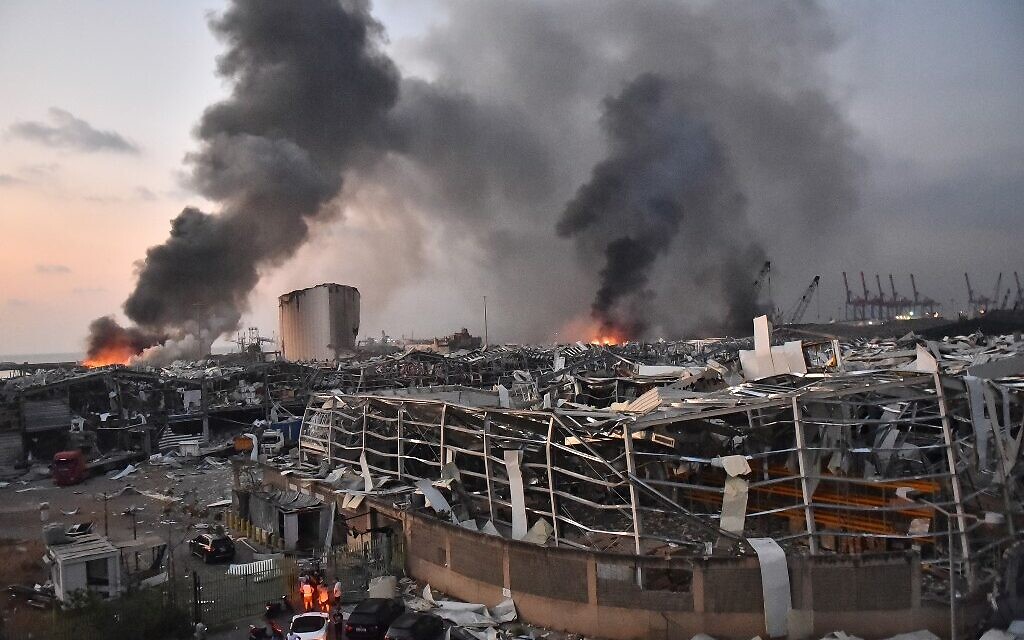

Ammonium nitrate is mainly used as a high nitrogen crop fertilizer and also as a component in explosives for industries such as mining.
It results from the reaction of ammonia with nitric acid.
Ammonia, while not highly flammable in itself, can explode if containers are
exposed to high heat.
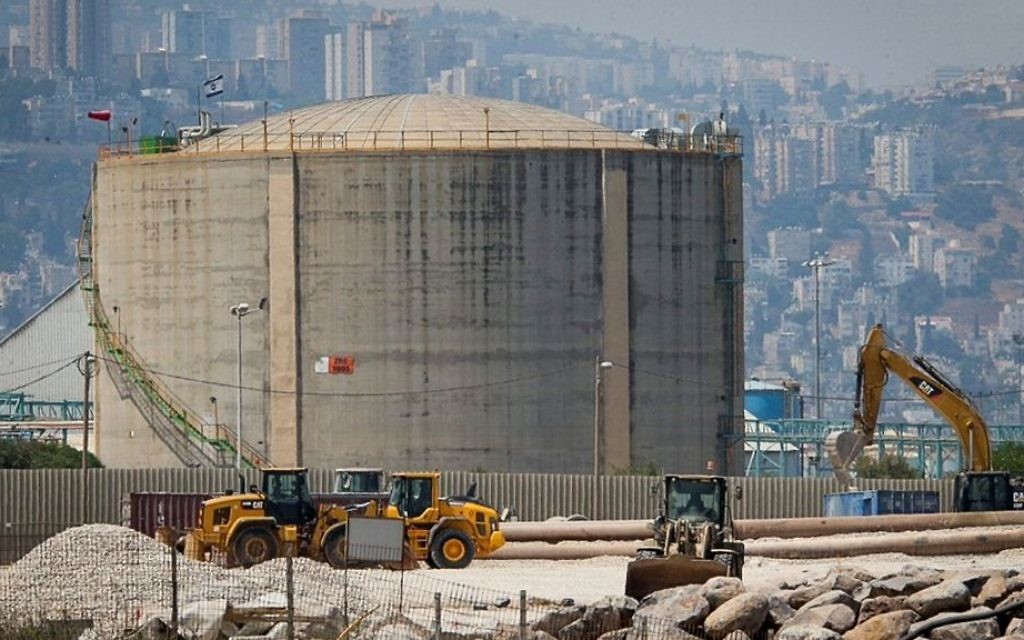

One source of danger was eliminated from the Haifa Bay two years ago when,
after years of public pressure, a massive ammonia storage tank was emptied
on the orders of the High Court.
Hassan Nasrallah, head of the Iran-backed Lebanese terror group Hezbollah,
has repeatedly threatened to bomb the tank.
Ammonia is now imported by ship and transported within Israel by pipeline.
Risks deemed low, but more research needed
In 2015, following a government decision to reduce air pollution and environmental risks
in the Haifa Bay, the Environmental Protection Ministry commissioned an exposure and
risk assessment of hazardous materials whose preliminary first phase results were put
out for public comment in July 2019.
The survey was conducted by a risk assessment expert and former ministry chief scientist, Eli Stern, along with four consulting firms.
The survey examined and mapped more than 1,500 “foci of danger” covering materials used in processing and production or stored as raw materials or as end products.
It looked at the potential for serious operational incidents arising from damage to containers or fires and explosions of flammable materials that could take place in factories and terminals. But it postponed for a second stage of research the potential dangers of transporting such materials or of earthquakes or terror attacks hitting them. The seismically active Yagur Fault passes between Haifa Bay and the Jordan Valley.
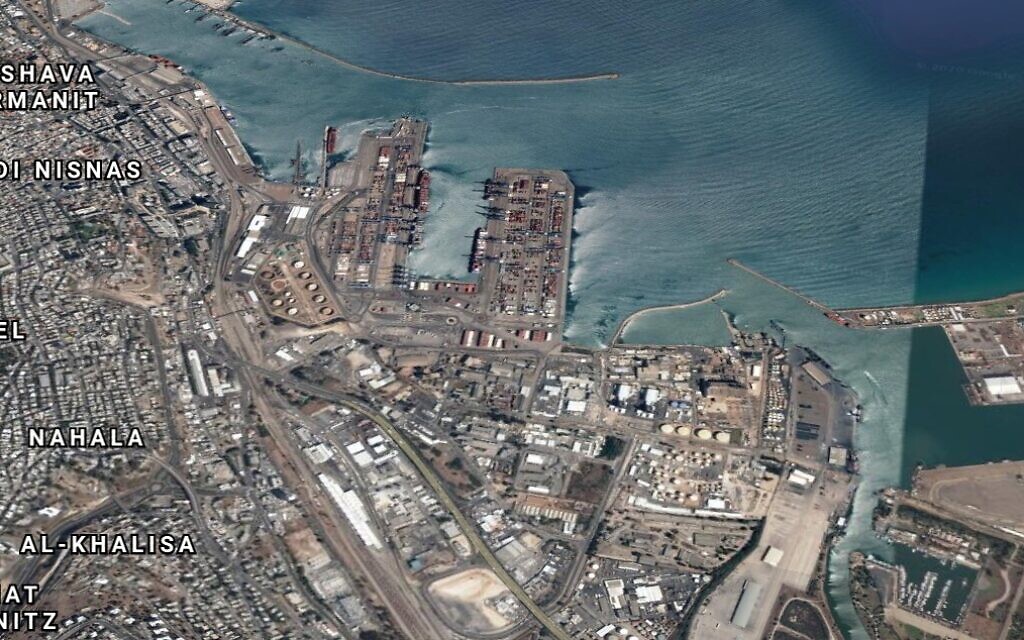

The report, which its author described as more of a screening, concluded that the probability of danger was low in the vast majority of cases, but singled out four establishments for further research — Haifa Group, which produces specialty fertilizers; Dor; The Bazan Group’s Gadiv Petrochemical Industries; and Gadot East.
Despite the September 2019 deadline for public comments, however, no final Phase A report has been published yet and there is no timetable for the start of a Phase B.
Zalul, a marine environmental protection organization, said in its submission at the time that the report was only partial and seemed primarily aimed at relaxing the public, “or worse, blinding it” to the dangers. The submission even questioned whether the release date had anything to do with the a severely critical state comptroller’s report published a month earlier.
“An aggregate risk report is perhaps important and necessary, as long as it is done in full, and includes all the threats — earthquakes, pipelines, war and terrorism, and a description of the range of solutions divided between the various government ministries and the various arms of implementation,” Zalul said. “Until this is done, this report has no value.”
In a June 2019 report, the state comptroller stated that some 900,000 residents of Haifa and the surrounding metropolitan area were being exposed to carcinogenic pollutants just as much as when a national plan was developed and accepted by the Environmental Protection Ministry in 2015.
He noted that a 2014 report from his office had found that the cancer rate in Haifa was 15 percent higher than the national average, and that asthma among children was twice the national average. Since then, the rate had been growing, as had the prevalence of heart and respiratory diseases, he said.
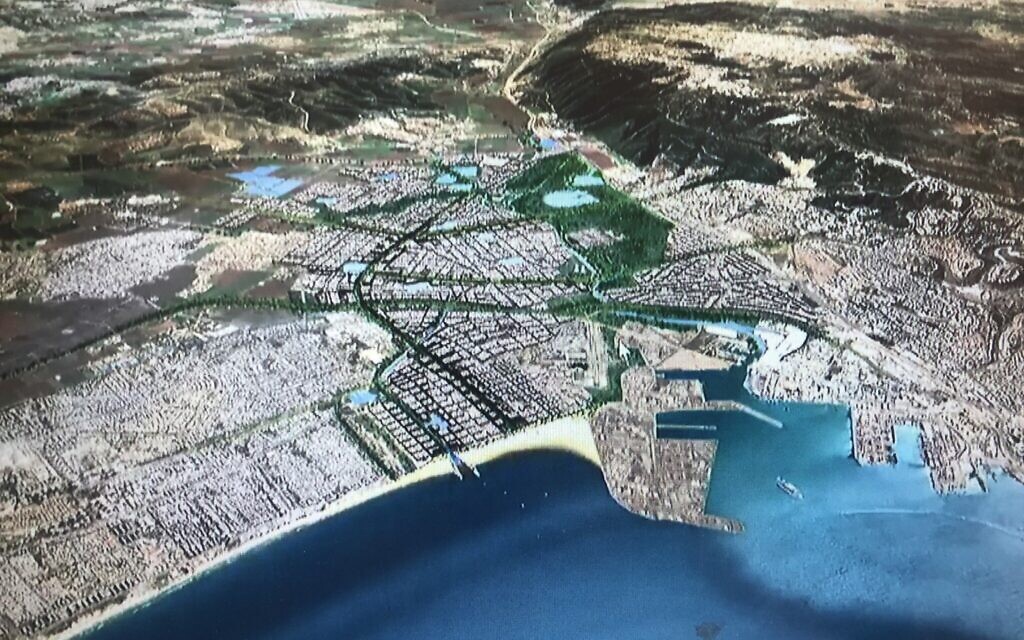

Both the National Economic Council, which advises the prime minister, and the Environmental Protection Ministry recommend shutting down within five years the
Bazan facilities, which have long polluted Haifa and largely defined its skyline, and replacing them with a green residential and commercial hub.
The Israel Lands Authority, which owns some 20,000 dunams (nearly 5,000 acres)
of land in the area, presented plans for the post-Bazan-era Haifa Bay to the Knesset
Internal Affairs and Environment Committee in June.
(Times of Israel).





